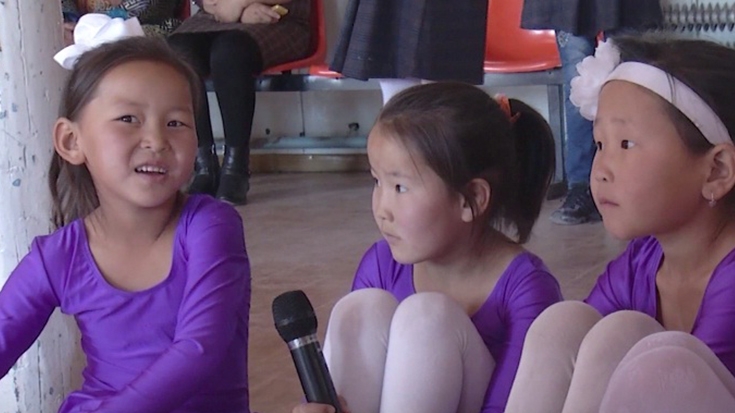Uuriintsolmon, 6, lives in Ulziit Soum (district), Arkhangai Aimag (province). Her parents are nomadic herders so their family moves about three or four times a year in search of good grazing lands for the sheep, goats, horses and cows that are their livelihood.
Because of this, Uuriintsolmon was not able to go to kindergarten. Her parents worried that she might lag behind her peers when she starts primary school. That was until help came their way.
Children’s First Teacher
In November 2013, Uuriintsolmon’s parents enrolled her in a home-based school preparation program that was offered at their soum. Through the program, a child takes home one “mobile” kit of books and toys from the school library at a time. The parents are trained on how to use the kit to assist their child with learning, effectively becoming the teachers at home. After the child finishes one kit, the family returns to the library to get a new kit. Each child has 10 kits to learn.
Uuriintsolmon pulls out a book from the kit. “The big book is for me. I learn a lot from the books.” A different book in the kit is for the parents to use to assist their children with learning.
“I have learned a lot, too,” said Uuriintsolmon’s mother. “Her little sister will reach school age in four years. With this great experience, I am confident to teach her.”
P. Ankhbold, Uuriintsolmon’s father, also saw great value in this learning and teaching experience. “When you work with your child this way, you learn to communicate with her. The family bond deepens,” he said.
The home-based school preparation program is part of a larger project that aims to improve education for nomadic children aged 6-10 in the most disadvantaged rural communities in Mongolia. The project, funded by the Japan Social Development Fund and managed by the World Bank, targets 30 soums in 4 aimags.
Save the Children Japan is implementing the project by promoting and piloting various community-based, culturally appropriate and innovative initiatives to improve education services and facilities at the local level, and to mobilize parents and community members.

